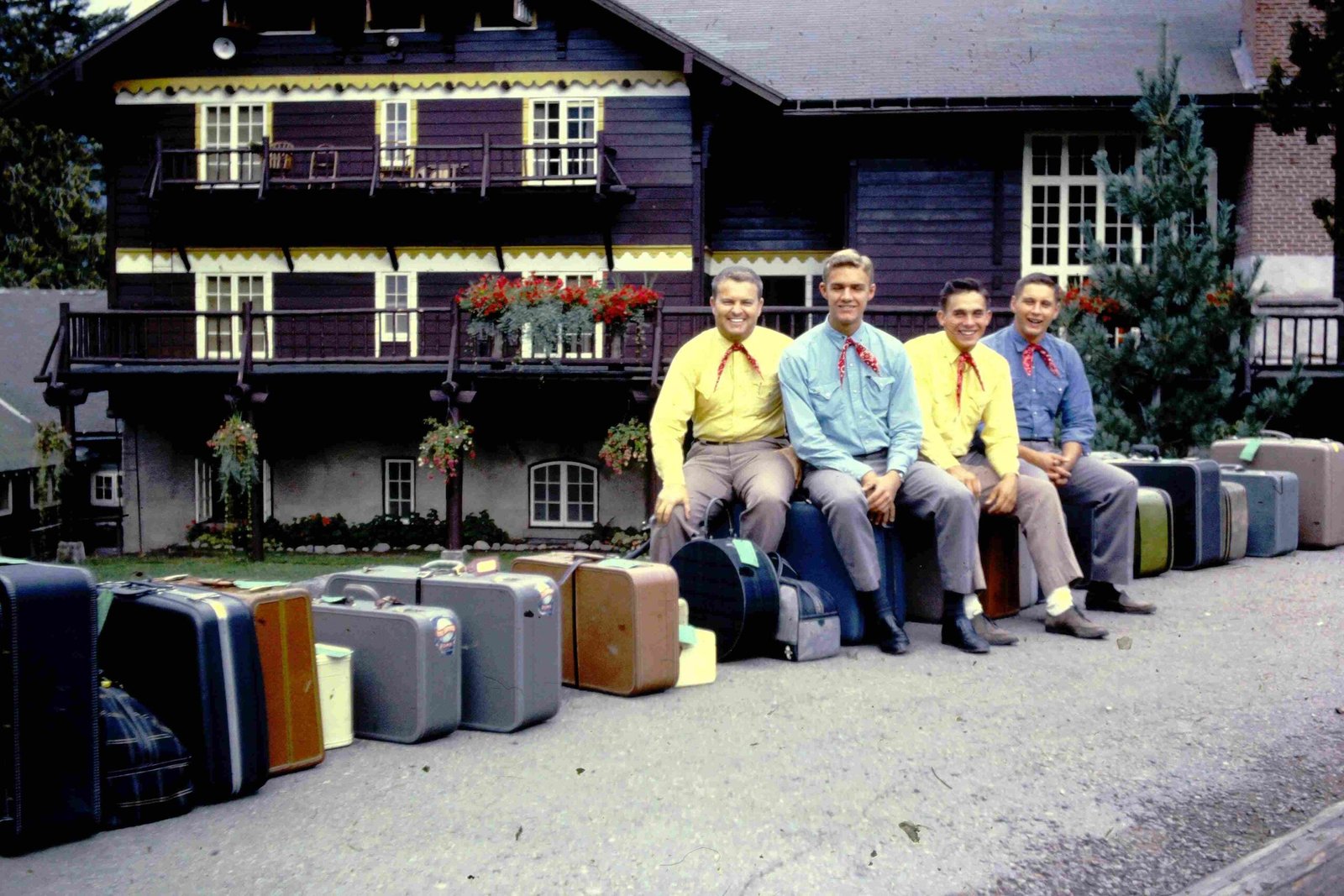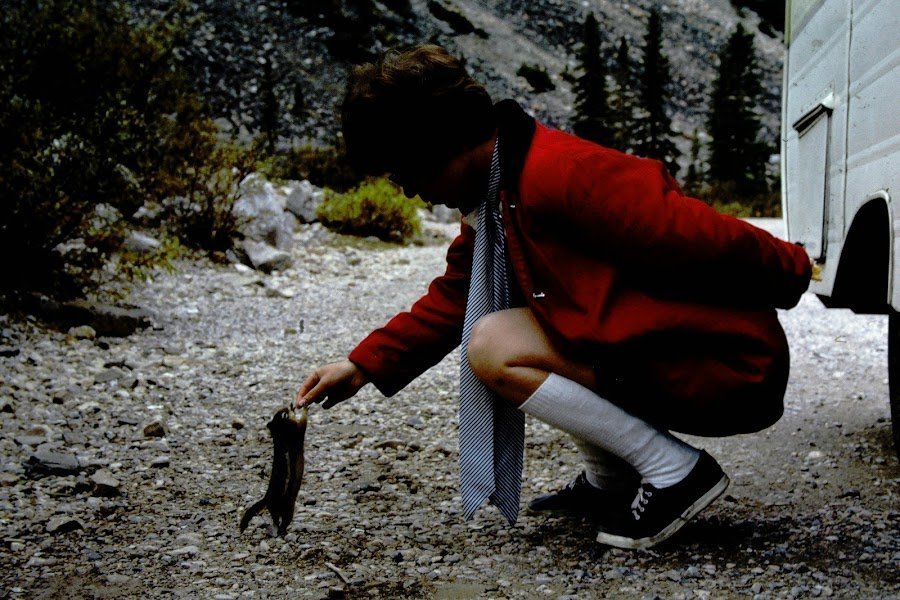The Glacier National Park Bison Range is a misnomer, as there is no dedicated bison range within the park itself. However, the nearby CSKT Bison Range, formerly known as the National Bison Range, offers visitors a chance to observe these majestic creatures. Located approximately one hour north of Missoula, Montana, this 18,524-acre reserve is home to around 350 adult bison and welcomes 50-60 calves annually. While Glacier National Park focuses on diverse ecosystems and glacial landscapes, the CSKT Bison Range provides a unique opportunity for wildlife enthusiasts to witness bison in their natural habitat.
Where is the Glacier National Park Bison Range Located?

Contrary to what the name might suggest, there is no specific bison range within Glacier National Park. However, the park’s ecosystem and the nearby CSKT Bison Range are interconnected in the broader context of wildlife conservation in Montana. Let’s break down the geographical details:
- Glacier National Park:
- Located in northwestern Montana
- Covers over 1 million acres (4,100 km²)
- Part of the Waterton-Glacier International Peace Park
-
Features diverse terrain including:
- Two mountain ranges (sub-ranges of the Rocky Mountains)
- Over 130 named lakes
- U-shaped valleys
- Moraines created by glacial action
-
CSKT Bison Range:
- Situated on the Flathead Indian Reservation
- Approximately one hour north of Missoula, Montana
- Accessible via U.S. Highway 93
- Entrance and range headquarters located in Moiese, Montana
- Encompasses 18,524 acres (7,496 ha)
While Glacier National Park doesn’t have a dedicated bison range, it’s important to understand the relationship between these two areas in terms of wildlife conservation and ecosystem management in the region.
How Many Bison Can Be Found in the Area?

The bison population in the area is primarily concentrated at the CSKT Bison Range, not within Glacier National Park itself. Here are the key statistics:
- Total adult bison: Approximately 350
- Annual calf births: 50-60 per year
- Population management: The range is managed to maintain a herd size between 300 to 350 animals
It’s important to note that these bison are confined to the CSKT Bison Range and do not have the opportunity for mass migrations. This controlled environment allows for better management and conservation efforts.
What Are the Best Times and Locations for Bison Viewing?
For those interested in bison viewing, the CSKT Bison Range is the primary destination. Here’s what you need to know:
- Best viewing locations:
- Two scenic roads within the range provide vehicular access to prime viewing areas
-
These roads offer opportunities to observe bison and other wildlife
-
Visitor Center:
- Serves as a starting point for your bison viewing experience
-
Provides information and guidance on wildlife viewing
-
Optimal viewing times:
- Early morning or late afternoon are generally best for wildlife activity
- Seasonal variations may affect bison behavior and visibility
Remember, while Glacier National Park offers stunning landscapes and diverse wildlife, it does not have specific trails or viewpoints dedicated to bison viewing.
What Types of Wildlife Tours Are Available?
When it comes to wildlife tours that include bison viewing, the focus is primarily on the CSKT Bison Range. Here’s an overview of the available options:
- Self-guided driving tours:
- Accessible via scenic roads within the range
- Allows visitors to explore at their own pace
-
Ideal for those who prefer flexibility in their wildlife viewing experience
-
Guided tours:
- May be available through local tour operators
- Offer expert insights and increased chances of wildlife sightings
-
Availability and costs should be verified with individual operators
-
Tour logistics:
- Access is provided through the visitor center
- Roads are designed for wildlife viewing from vehicles
- Tours typically last a few hours, depending on the chosen route and wildlife activity
It’s important to note that specific tour operators and costs are not detailed in the available sources. Visitors should check with the CSKT Bison Range visitor center or local tourism offices for up-to-date information on guided tour options.
What Regulations and Guidelines Should Visitors Follow?
To ensure the safety of both visitors and wildlife, as well as to preserve the natural habitat, there are several regulations and guidelines that should be followed when visiting the CSKT Bison Range:
- General wildlife viewing guidelines:
- Stay in vehicles on designated roads
- Do not approach wildlife
- Maintain a safe distance at all times
-
Use binoculars or zoom lenses for close-up views
-
Vehicle restrictions:
- Follow speed limits on scenic roads
- Do not drive off designated routes
-
Yield to wildlife crossing the road
-
Photography rules:
- No drone usage without proper permits
- Avoid using flash photography that may disturb animals
-
Do not use calls or audio devices to attract wildlife
-
Environmental protection:
- Pack out all trash
- Stay on designated trails if hiking is permitted
-
Do not remove any natural objects or plants
-
Seasonal considerations:
- Be aware of potential closures during calving season
- Follow any additional guidelines during mating season
Visitors should always check with the CSKT Bison Range visitor center or their official website for the most current regulations and guidelines, as these may be updated based on environmental conditions or management needs.
How Does the Bison Range Contribute to Conservation Efforts?
The CSKT Bison Range plays a crucial role in bison conservation and ecosystem management. Here’s how it contributes to these efforts:
- Population management:
- Maintains a sustainable herd size of 300-350 bison
-
Implements controlled breeding programs to ensure genetic diversity
-
Habitat preservation:
- Conducts regular controlled burns to maintain grassland ecosystems
- Manages water diversions to support natural habitats
-
Monitors and controls invasive species
-
Research opportunities:
- Provides a controlled environment for studying bison behavior and ecology
-
Contributes to broader understanding of grassland ecosystem management
-
Public education:
- Offers visitors a chance to learn about bison conservation
-
Raises awareness about the historical and cultural significance of bison
-
Collaboration with indigenous communities:
- Managed by the Confederated Salish and Kootenai Tribes
- Integrates traditional ecological knowledge into conservation practices
By maintaining a healthy bison population and preserving their habitat, the CSKT Bison Range serves as a model for wildlife conservation and sustainable land management.
What Other Wildlife Can Be Seen in the Area?
While bison are the star attraction at the CSKT Bison Range, visitors have the opportunity to observe a diverse array of wildlife. Here’s a list of some other species you might encounter:
- Mammals:
- Elk
- Pronghorn antelope
- Bighorn sheep
- Mule deer
- White-tailed deer
-
Black bear (occasional sightings)
-
Birds:
- Golden eagles
- Bald eagles
- Osprey
- Various waterfowl species
-
Prairie birds like meadowlarks and sparrows
-
Smaller creatures:
- Ground squirrels
- Coyotes
- Badgers
- Various reptile and amphibian species
Remember that wildlife sightings are never guaranteed and depend on various factors such as season, time of day, and animal behavior. Always maintain a respectful distance and use binoculars or telephoto lenses for better views.
How Can Visitors Prepare for a Trip to the Bison Range?
To make the most of your visit to the CSKT Bison Range, consider the following preparation tips:
- Plan your visit:
- Check the range’s official website for current hours and seasonal closures
-
Choose the best time of year based on your wildlife viewing preferences
-
Pack essentials:
- Binoculars or spotting scope
- Camera with zoom lens
- Water and snacks
- Sunscreen and insect repellent
-
Warm layers (weather can change quickly)
-
Vehicle preparation:
- Ensure your vehicle is in good condition for driving on scenic roads
-
Fill up your gas tank before entering the range
-
Education:
- Read up on bison behavior and ecology before your visit
-
Familiarize yourself with other wildlife species you might encounter
-
Safety precautions:
- Bring a first-aid kit
- Have a fully charged cell phone (though reception may be limited)
- Inform someone of your travel plans
By following these preparation tips, you’ll be well-equipped to enjoy a safe and memorable visit to the CSKT Bison Range, experiencing the majesty of bison and the beauty of the Montana landscape.
References
- https://www.nwf.org/Magazines/National-Wildlife/2021/Aug-Sept/Conservation/Bison-Range
- https://en.wikipedia.org/wiki/CSKT_Bison_Range
- https://fieldguide.mt.gov/speciesDetail.aspx?elcode=AMALE01010